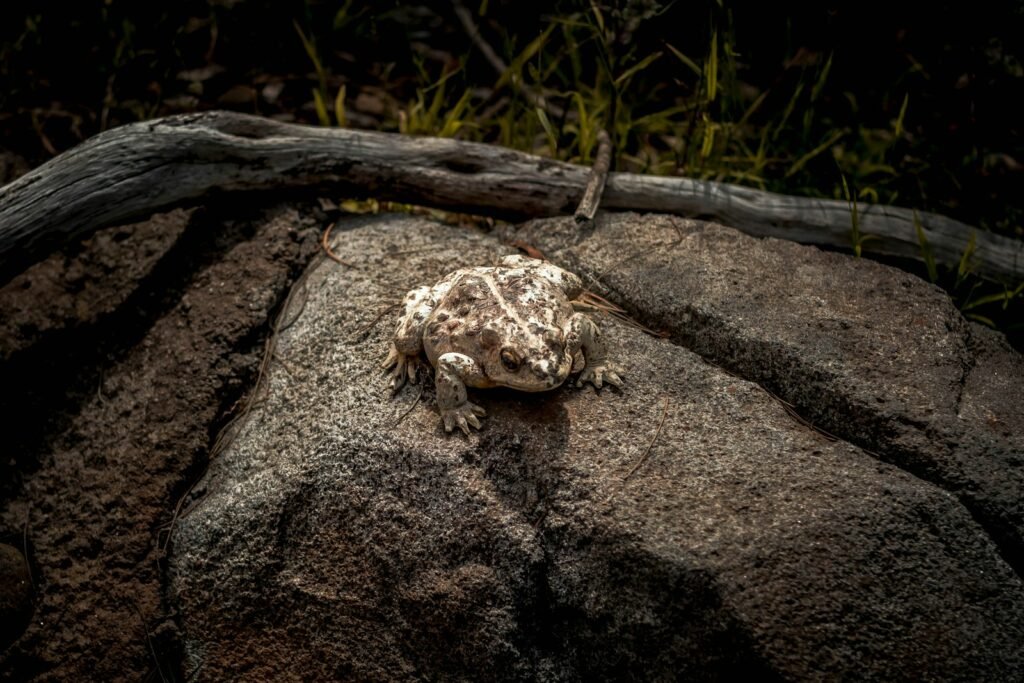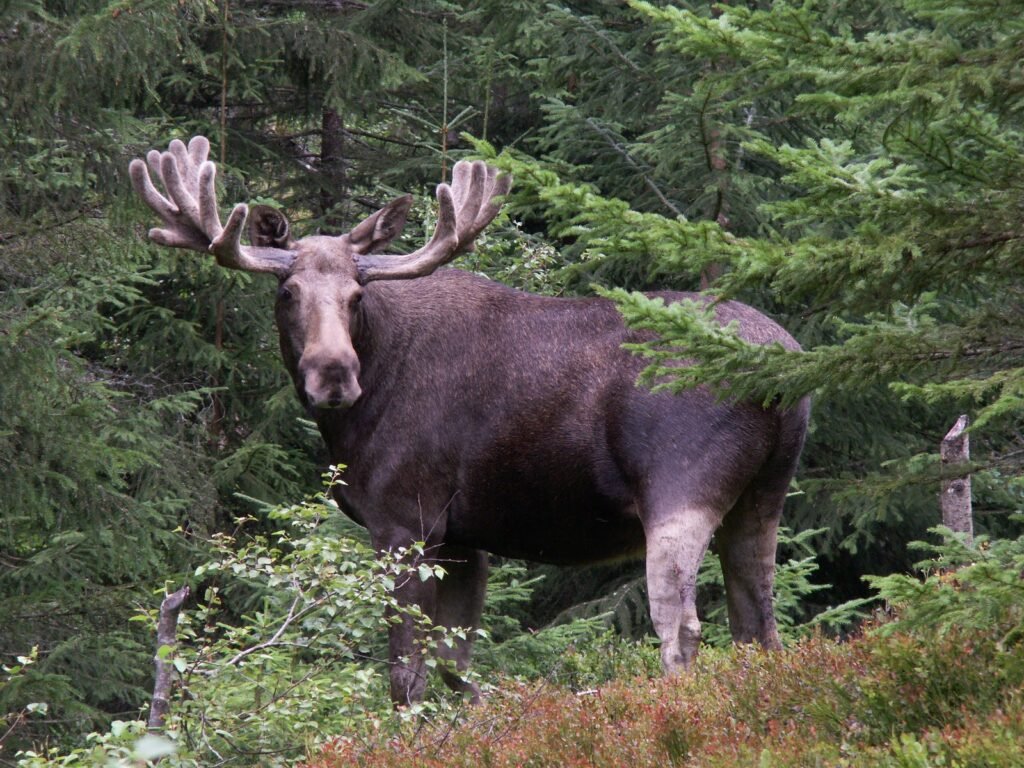The desert never sleeps when the rains finally come. Where barren earth stretched endlessly under a relentless sun just days ago, Arizona’s mountains and valleys now echo with a symphony that seems impossible – the urgent, triumphant calls of frogs and toads erupting from underground hideouts they’ve occupied for months. Males give advertisement calls after these heavy rains to find mates. What seems like magic is actually one of nature’s most sophisticated survival strategies, perfectly timed to the precious monsoon season that can make or break an entire year’s worth of reproduction.
The Underground Wait That Defines Desert Life

Beneath Arizona’s sunbaked surface lies a hidden world where amphibians spend nearly ten months of each year in a state that scientists call estivation – essentially hibernation designed for extreme heat and drought rather than cold. Members of this family are predominantly fossorial, living underground until rain arrives. These remarkable creatures have turned waiting into an art form, burrowing as deep as three feet underground in sandy soils where they remain cocooned in their own shed skin to retain precious moisture.
The spadefoot toads – Arizona’s most abundant desert amphibians – have evolved specialized digging tools to make their subterranean lifestyle possible. To aid in digging, they have keratinized protrusions on their feet. Preying primarily upon beetles, grasshoppers, katydids, ants, spiders, and termites, a spadefoot can consume enough food in one meal to last an entire year! This incredible feat of metabolic efficiency allows them to survive months without food or water, their bodies essentially shutting down non-essential functions while they wait for the right acoustic cue to trigger their emergence.
When Thunder Becomes an Alarm Clock

The trigger for this remarkable emergence isn’t just moisture – it’s sound itself. According to the Arizona-Sonora Desert Museum, the spadefoot lies dormant underground during hot, dry periods and is drawn out of hiding not by monsoon moisture but by the low-frequency sounds and vibrations of rainfall and thunder. These vibrations travel through the earth like a biological alarm clock, telling dormant amphibians that conditions above ground have finally become suitable for the race of their lives.
University of Arizona research scientist Phil Rosen said there are about a half-dozen different species local residents might see from now until late August – all of them adapted to survive through long dry spells and breed right away when things occasionally get wet. The timing has to be perfect because this brief window represents their only chance to feed, mate, and complete their entire reproductive cycle before the temporary pools evaporate back into the desert floor.
The Fastest Reproduction on Earth

What happens next pushes the boundaries of biological possibility. Their eggs have been known to hatch in just 15 hours, and they can complete the transformation from “tadpole to hopper” in as little as a week – assuming the puddle they are deposited in lasts that long. Eggs will begin to hatch as soon as 15 hours after being laid, and the full transition from tadpole to adulthood can be completed in as little as 9-14 days! For comparison, most toad and frog species take 40-90 days to complete the same transition.
This lightning-fast development represents one of nature’s most compressed life cycles. While frogs in temperate regions might leisurely develop over several months, desert amphibians have streamlined every stage of metamorphosis to match the fleeting availability of water. The tadpoles must eat, grow, develop lungs, absorb their tails, and become terrestrial adults all before their temporary nursery pools disappear into the sand.
They only have until the puddles dry up to eat enough food for the rest of the year, find a mate to breed with, and for the eggs to fully transition into adults. Most spadefoots in an area will breed during the first rains of the season allowing their offspring the rest of the season to turn into adults and eat their fill.
Arizona’s Amphibian Diversity Explosion

Recent monsoon seasons have been particularly generous to Arizona’s amphibian populations when conditions are favorable, with above-average rainfall across much of the state, offering a welcome break from the heat and a boost for Arizona’s landscapes, wildfire, and water resources. This abundance of rainfall has triggered breeding events across multiple species simultaneously, creating a chorus that can be heard for miles across the desert landscape.
In addition to true toads, Arizona is home to treefrogs, true frogs or water frogs, and spadefoot toads. Each species has its own distinctive call and timing preferences, with some emerging during the first gentle rains while others wait for more substantial downpours. The Great Plains toad produces calls that can carry considerable distances across the desert landscape, while the tiny Western narrow-mouthed toad contributes a sheep-like bleating sound to the desert symphony.
The Feeding Frenzy Connection

In addition to the all-important moisture, amphibians are drawn out this time of year by another monsoon mainstay: flying ants. After a storm, Rosen said, swarms of the insects will emerge, touching off a feeding frenzy by frogs and toads. This synchronization between amphibian emergence and insect activity represents millions of years of co-evolution, where both predators and prey have learned to time their life cycles to monsoon patterns.
The post-storm insect explosions provide crucial nutrition for amphibians that haven’t eaten in months. Flying ants, termites, beetles, and other insects emerge in massive numbers after monsoon rains, creating an all-you-can-eat buffet that helps adult amphibians build up energy reserves for another year of underground survival. This feeding opportunity is so critical that some spadefoots can consume enough calories in a single night to sustain them through an entire year of estivation.
Climate Challenges and Conservation Concerns

Their numbers appear to be declining in and around Tucson, and we’re all likely to miss them when they’re gone, Rosen said. The increasingly erratic nature of monsoon patterns due to climate change poses significant challenges for species that have evolved such precise timing mechanisms over millions of years. When rains come too late, too early, or not at all, entire generations of amphibians can fail to reproduce.
For example, the inactive 2023 Monsoon Season resulted in significant drought expansion for New Mexico and Arizona. Meanwhile, an average to above-average monsoon can potentially improve or remove drought conditions, such as the 2022 North American Monsoon, which brought significant rainfall and improved drought conditions in Arizona and New Mexico. These wild swings in precipitation patterns make it increasingly difficult for desert amphibians to maintain stable populations.
The Toxin Defense Strategy

Desert amphibians have evolved another remarkable survival strategy beyond their rapid reproduction – chemical warfare. Sonoran Desert toads have extremely potent, defensive toxins that are released from several glands (primarily the paratoids) in the skin. Animals that harass this species generally are intoxicated through the mouth, nose, or eyes. These toxins serve as a powerful deterrent against predators, though they can also pose dangers to curious pets and humans.
Couch’s spadefoots have a skin secretion that may cause allergic reactions in some humans. Cuts and scratches may become painful, and sneezing and discharge from the eyes and nostrils may also result from the handling of this amphibian. This chemical protection becomes particularly important during the brief breeding season when amphibians are most vulnerable, congregating in large numbers around temporary water sources.
The Future of Desert Soundscapes

Looking ahead, the survival of Arizona’s amphibian choruses depends largely on the preservation of suitable habitat and the maintenance of natural monsoon patterns. Beyond the drama, the monsoon helps refresh vegetation and support local agriculture and wildlife. Climate scientists are working to understand how changing global weather patterns might affect the delicate timing mechanisms that these species depend on for survival.
Recent advances in acoustic monitoring technology are helping researchers track amphibian populations with greater precision than ever before. Scientists can now identify species, estimate population sizes, and monitor breeding success simply by recording and analyzing the calls that fill Arizona’s nights during monsoon season. This data is crucial for conservation efforts and helps land managers make informed decisions about habitat protection and water resource management.
Supporting Desert Amphibian Conservation

Citizens can play a vital role in protecting Arizona’s remarkable amphibian diversity through simple but meaningful actions. Creating amphibian-friendly spaces in yards and gardens – including shallow water features and native plant landscaping – provides important habitat corridors for these species. There are also several ramps and floating platforms on the market – including one called a FrogLog – designed to help amphibians and other animals escape from pools.
Participating in citizen science projects like the Arizona Game and Fish Department’s amphibian monitoring programs helps researchers track population trends and breeding success across the state. Additionally, supporting conservation organizations that focus on desert ecosystem protection and climate change mitigation contributes to long-term habitat preservation efforts.
Avoiding the use of pesticides and herbicides in areas where amphibians might travel or feed is another crucial step. As far as he’s concerned, insect-eating reptiles and amphibians are the allies of bug guys like him. “They’re helping us. They’re making our job easier,” he said.
The next time Arizona’s mountains ring with the ancient calls of desert amphibians after a summer storm, remember that you’re witnessing one of nature’s most remarkable survival strategies in action. These creatures have mastered the art of living on the edge, cramming an entire year’s worth of activity into just a few precious weeks of monsoon abundance. Their success or failure ripples through the entire desert ecosystem, reminding us that even in the harshest environments, life finds extraordinary ways to persist and thrive. What would you guess these remarkable survivors will teach us next about resilience in a changing world?

Suhail Ahmed is a passionate digital professional and nature enthusiast with over 8 years of experience in content strategy, SEO, web development, and digital operations. Alongside his freelance journey, Suhail actively contributes to nature and wildlife platforms like Discover Wildlife, where he channels his curiosity for the planet into engaging, educational storytelling.
With a strong background in managing digital ecosystems — from ecommerce stores and WordPress websites to social media and automation — Suhail merges technical precision with creative insight. His content reflects a rare balance: SEO-friendly yet deeply human, data-informed yet emotionally resonant.
Driven by a love for discovery and storytelling, Suhail believes in using digital platforms to amplify causes that matter — especially those protecting Earth’s biodiversity and inspiring sustainable living. Whether he’s managing online projects or crafting wildlife content, his goal remains the same: to inform, inspire, and leave a positive digital footprint.




